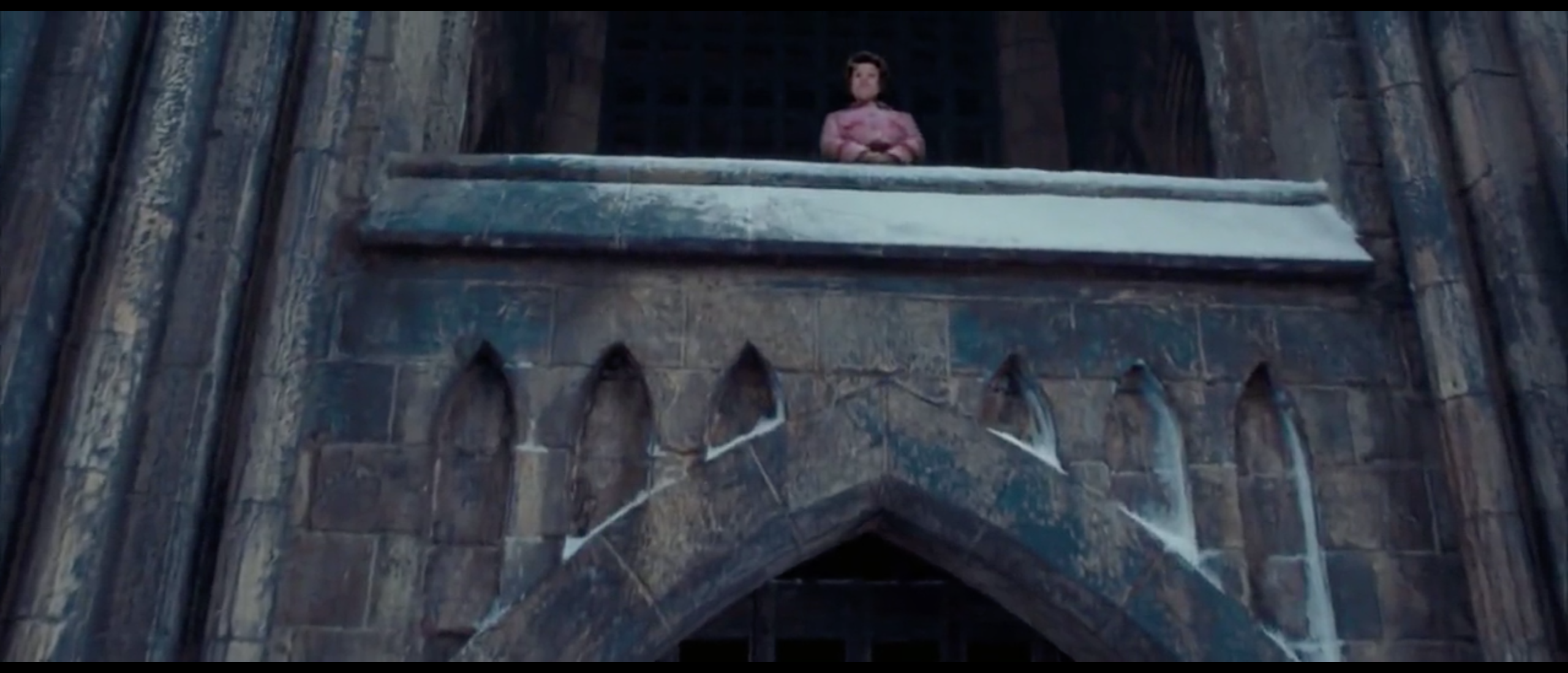Hogwarts as a Panoptical Prison: The “Umbrage” Umbridge Brings
While conducting my annual reading of Harry Potter and the Order of the Phoenix, I had a geeky theoretical epiphany where I was struck by how similarly Hogwarts, under Umbridge’s reign, behaves to a prison. More specifically, it mimics Michel Foucault and prison architect Jeremy Bentham’s carceral continuum and panopticon, a way in which to (in Foucault’s words) “induce a state of consciousness and permanent visibility that assure[d] the automatic functioning of power” (138). The carceral continuum “diffused penitentiary techniques into the most innocent of disciplines” (297). In this article, we will take a look at five prominent regulatory techniques employed by the Ministry of Magic within Hogwarts by way of Senior Undersecretary Dolores Jane Umbridge. Indeed, the Ministry has infiltrated Hogwarts!
The concept of the panopticon allowed for the observer to survey the inmates without the prisoners knowing for sure whether or not they were being watched, conveying a constant “sentiment of invisible omniscience” (138).
Hang on – don’t look at me like I’m Professor Binns. Stay with me.
Harry is regulated by the five subdivisions of Foucault’s carceral continuum: individuation, regulation, hierarchization, surveillance, and spatialization. Yes, a lot of fancy words, but the theories behind each, applied to Harry Potter, are quite fascinating.
Individuation is an individual’s sense of self or “role [in prison society] for delinquents” formed by institutions (Foucault 300). It is the Ministry’s task to make “docile bodies” by removing the learning and practicing of defensive spells from the classroom (Foucault 138). As such, Harry fights back and individualizes as the school’s “outlaw” by forming Dumbledore’s Army. This is Harry’s primary role in HP5: the leader and sense of hope for those unfooled by the Ministry’s efforts to turn them into docile pea-brained trolls.
Secondly, Harry is controlled by regulation. According to Foucault, “regulations of the disciplinary establishments may reproduce the law” (302). The law, of course, is Minister Fudge and the Ministry of Magic. And the reproduction of law? Professor Umbridge. “Umbrage” means hostility, J.K. Rowling’s clever stab at an aptronym. Do y’all remember Umbridge’s decrees? The decrees were used in effect to regulate Hogwarts’ docile bodies. Filch wedged 119 of these suckers into the wall, nearly falling off his flailing ladder. Two of these decrees directly relate to Harry’s newfound status as outlaw: “All student organizations are henceforth disbanded” and “Dolores Jane Umbridge has replaced Albus Dumbledore as Head of Hogwarts School of Witchcraft and Wizardry.”

Hierarchization is the “distribution of rank” in prison (184). This hierarchy allows the higher power to “occupy” or “own” the prisoner. As Foucault states, “By occupying the convict, one gives him the habits of order and obedience” (242). This can be seen in the movie when Umbridge audits Professor Snape’s class. During the scene, “Professor Umbridge” is played in the background, music Nicholas Hooper composed as a grandiose, rising march. The march, paired with Umbridge circling Professor Snape in a convict-style interrogation while Harry sits at his desk, establishes the power relations at Hogwarts: Umbridge, the professors, and then Harry. Quite comically, Umbridge points out Snape’s shortcomings and Harry laughs, receiving a swift blow to the head. Much like a prisoner, Harry does not fight back or leave the classroom. Despite the laugh, Harry is obedient and “occupied” by his Headmaster and teacher.
Harry is regulated by surveillance. To Foucault, surveillance comes in a number of forms within the prison: “Knowledge of each inmate, of his behavior, his deeper states of mind… observation, security, isolation, and transparency” (249). Umbridge’s omnipotent surveillance of Harry and the DA can be seen when Harry returns from Hogwarts from his first DA meeting in Hogsmeade. Harry and his friends are filmed walking through the snow toward Hogwarts, the focus slowly gliding up toward Professor Umbridge, standing above the students on top of the highest clock tower. The tower resembles the all-seeing guard tower in Bentham’s prison model.

Finally, Harry is regulated by spatialization. To Foucault, spatialization of the inmate is “architectural, functional, and hierarchical” (147). This can mostly be seen in the classroom model at Hogwarts, much like the classroom models we all know quite well: long rows of desks filled with students and a podium facing them, or a larger desk, where the instructor sits. Umbridge observes Harry’s OWL examination from a podium, a sizable pendulum clock swinging behind her. The room is arranged spatially to keep Umbridge in control: Umbridge elevated in front of the students for prime visibility and surveillance yet far enough away from Harry and the others to ensure her own safety.


“I will have order!” are Umbridge’s last words as she’s carried off by centaurs, outlaws of their own kind. This demonstrates that ultimate power is transitory. The pendulum swings on. Here’s Gollum’s take on who holds the power:
This thing all things devours:
Birds, beasts, trees, flowers;
Gnaws iron, bites steel;
Grinds hard stones to meal;
Slays king, ruins town,
And beats high mountain down.
Sorry to break it to you, Umbridge; Voldy. Time is inanimate and as such, is a power wholly unstoppable.
Work Cited
Foucault, Michel. Discipline and Punish: The Birth of the Prison. New York: Vintage, 1995. Print.





